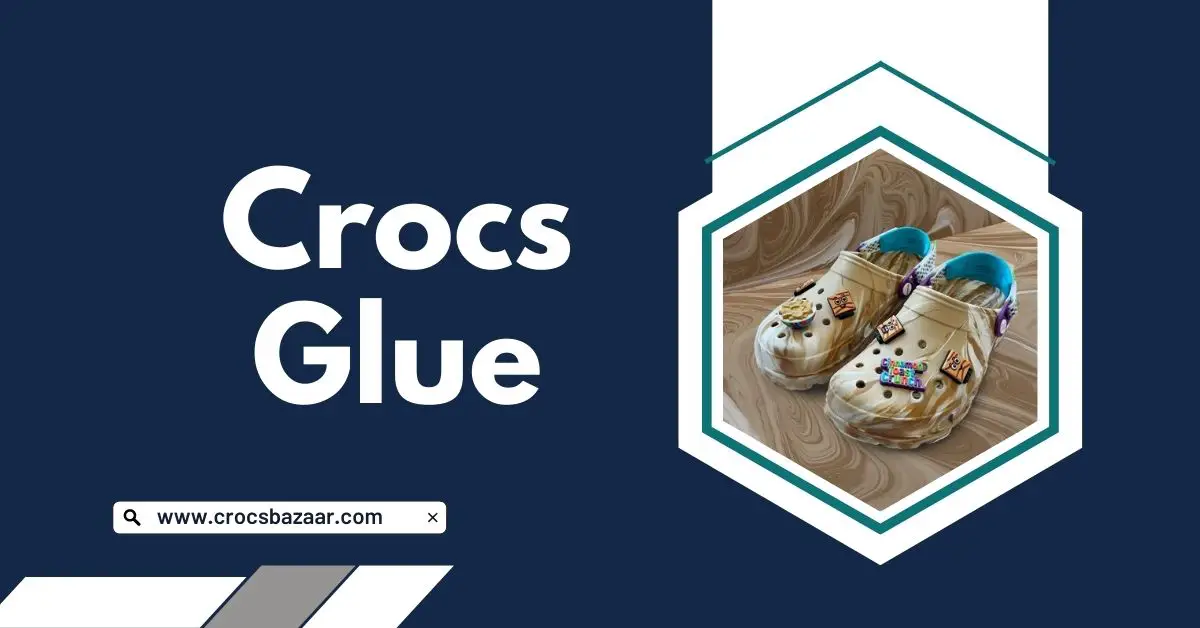Crocs have become a staple in the fashion world for its comfortable construction, bright colors, and unique design. Crocs glue is the brand’s latest invention, allowing wearers to customize their shoes to match their own personal style. This revolutionary adhesive offers a safe and easy way to make any pair of shoes look like new again. With this new product, Crocs is hoping to give customers more freedom in how they wear their shoes.
Which glue is best for Crocs?
When it comes to mending your favorite pair of Crocs shoes, it’s important to choose the right glue. The best type of glue for Crocs depends on the material they are made from and what you need them to do. From flexible options that will hold up in wet conditions or high-strength adhesives that provide a quick fix, there are several glues to choose from.
Here are some crocs glue you can consider:
Eva glue for crocs
EVA glue is a type of adhesive that is often used for bonding foam materials, such as the foam used in Crocs shoes. It is a strong, flexible glue that can be used to repair or modify Crocs shoes. To use EVA glue, you will need to apply it to both surfaces that you want to bond and then press them together firmly until the glue dries. The glue should dry clear and be able to withstand wear and tear.
Gorilla glue for crocs
Gorilla glue is a multi-purpose adhesive that can be used to repair and bond a variety of materials, from wood to rubber. Crocs have become popular shoes for kids and adults alike, but their lightweight design means that they are susceptible to damage. But with the help of Gorilla glue, you can easily repair your crocs in just a few minutes.
Using Gorilla glue on your crocs is easy and straightforward. All you need to do is: clean any dirt or debris off the affected area; apply the gorilla glue directly onto both surfaces; press firmly together; hold until it has set and dried properly; and then enjoy your like-new crocs! The great thing about using Gorilla glue on your crocs is that it won’t damage or discolor them in any way once applied correctly.
e6000 glue for crocs
E6000 is a type of industrial strength adhesive that is often used for bonding materials that are exposed to extreme conditions. It is a clear, waterproof glue that is resistant to heat, cold, and UV light. E6000 may be a good choice for repairing or modifying Crocs shoes because it is strong and flexible, and it dries clear. To use E6000, you will need to apply it to both surfaces that you want to bond and then press them together firmly until the glue dries. The glue should dry completely in 24 hours, and it can be trimmed or sanded once it has fully cured. Keep in mind that E6000 has a strong chemical smell, so you may want to use it in a well-ventilated area.
How do you glue patches to crocs?
To glue patches to Crocs shoes, you will need a strong, flexible adhesive, such as EVA glue or E6000. Here’s a step-by-step guide on how to do it:
- Clean the surface of the Crocs where you want to apply the patch. Use a mild soap and water to remove any dirt or debris. Let the shoes dry completely.
- Cut the patch to the desired size and shape, if necessary.
- Apply a thin layer of adhesive to the back of the patch and to the surface of the Crocs where the patch will be applied.
- Press the patch onto the Crocs firmly, making sure that it is aligned properly.
- Use a heavy object, such as a book or a shoe, to apply pressure to the patch for at least 30 minutes. This will help the adhesive bond securely.
- Let the adhesive dry completely according to the manufacturer’s instructions. This may take several hours or even overnight.
- Once the adhesive is fully cured, the patch should be securely attached to the Crocs. You can wear the shoes as normal, but try to avoid exposing them to water or extreme temperatures until the adhesive has fully cured.
Can I use super glue on crocs?
You can use super glue, also known as cyanoacrylate, to bond patches to Crocs shoes. However, it may not be the best choice for this purpose. Super glue is a strong adhesive that dries quickly, but it can be brittle and prone to cracking. It is also not very flexible, which means that it may not be able to withstand the wear and tear of normal use. If you do decide to use super glue on your Crocs, be sure to follow the manufacturer’s instructions and use it sparingly. You should also avoid getting the glue on any areas of the shoes that come into contact with your skin, as it can cause irritation.
How do you replace Croc rivets?
Replacing Croc rivets is a simple process that you can do at home with a few basic tools. Here’s a step-by-step guide on how to do it:
- Gather your tools. You will need a new set of rivets, a hammer, a punch or a nail, and a hard surface to work on, such as a block of wood.
- Remove the old rivets. Use the punch or nail to gently tap the old rivets out of the holes in the Crocs. Be sure to work slowly and carefully to avoid damaging the shoes.
- Insert the new rivets. Place the new rivets into the holes in the Crocs, with the flat end facing down and the pointed end facing up.
- Secure the rivets. Use the hammer to gently tap the pointed end of the rivets until they are flush with the surface of the Crocs. Be sure to work evenly and apply gentle pressure to avoid damaging the shoes.
- Test the rivets. Once the rivets are in place, test them by gently tugging on the shoes to make sure they are secure. If they feel loose, you may need to tap them in further.
- Wear the Crocs as normal. The new rivets should be secure and able to withstand normal wear and tear. If you notice any issues with the rivets, such as them coming loose or falling out, you may need to replace them again.
In conclusion,Crocs Glue is an effective and easy-to-use adhesive that can be used to repair all kinds of footwear. It is waterproof, quick drying, and provides a strong bond for all types of materials. Crocs Glue is easy to apply and requires no special tools or skills to use. With its incredible durability and flexibility, it can be used with confidence to repair almost any type of shoe, sandal or boot.
Hello, my name is Forekan Sadik and I am the proud owner and chief editor of crocsbazaar.com. I created this blog out of my sheer love and passion for the famous footwear brand, Crocs.
As a true Crocs enthusiast, I am always eager to share my knowledge and insights about this iconic brand with my readers. I strive to provide valuable and engaging content that helps my readers learn more about the comfort and design of Crocs.
Through Crocs Bazaar, I have built a loyal community of fellow Crocs lovers who trust my expertise and insights on everything related to this brand. I am committed to providing the highest quality content that educates and informs my readers on the ins and outs of the Crocs brand.
Apart from my work with Crocs Bazaar, I love to travel, explore new places, and try new cuisines. I am also a community geek, sports person and a digital nomad.Checkout my profile highlights. Connect with me in LinkedIn.


